I’ve mentioned numerous times on this blog that I’ve previously owned and extensively shot with a Voigtlander R2A, a camera that I had previously kept when I sold my Leica M6. In the end though, I sold the R2A to my mate Ben just after I bought the Leica M7, but whilst I am more than more than happy with the M7, there has always been a little nagging feeling that I should have kept the R2A as a metered back up. Yet despite having this nagging feeling, I’ve never been that motivated to buy another R2A… The Voigtlander R3A on the other hand … Well in the end that was a camera I just couldn’t resist having a go with.
Over the course of my Voigtlander R2A & R3A review, I shall (as usual) go to some pains to describe the various features that these two very similar cameras share, but before I get into that, it seems logical to describe their differences… Or more accurately, their difference…
The Voigtlander R2A & R3A Viewfinder & Rangfinder
The Voigtlander R2A has a .68x magnification viewfinder, which is not far off the magnification of the standard 0.72 magnification of most Leicas, including my M7. But unlike the M7 et al, the Voigtlanders have – via a three way switch on the top – a manually selected frame line. The R2A also only has 4 sets of frame lines: 35, 50, 75 & 90mm (35 & 90 show together). This is compared to the 6 in the standard Leica M7 which adds 28 & 135mm to the frame line party.
The Voigtlander R3A is a different beast altogether though. The R3A has a 1x magnification viewfinder, or what some call a 1:1 finder. In layman’s terms, the view through the finder is life-size – a feature that has both advantages and disadvantages. The most significant disadvantage is only really relevant to the regular user of wide angle lenses. This level of magnification means that the frame lines available are 50, 75, 90 and the slightly more unusual 40mm (40 & 90 are shown together). Now you might be thinking that there is only a little difference between 35mm and 40mm. And this is largely true, but the 40 lines in the R3A are so close to the left and right side of the finder that they are barely visible at the same time. In the R2A the 35mm frame lines have quite a bit of breathing room around them, so much so that I used to shoot 28mm on my Voigtlander R2A by framing with the whole of the finder. If you wanted to use a 35mm on the R3A you would have to guess or use an external viewfinder. For 28mm, guessing might just be too far a stretch.
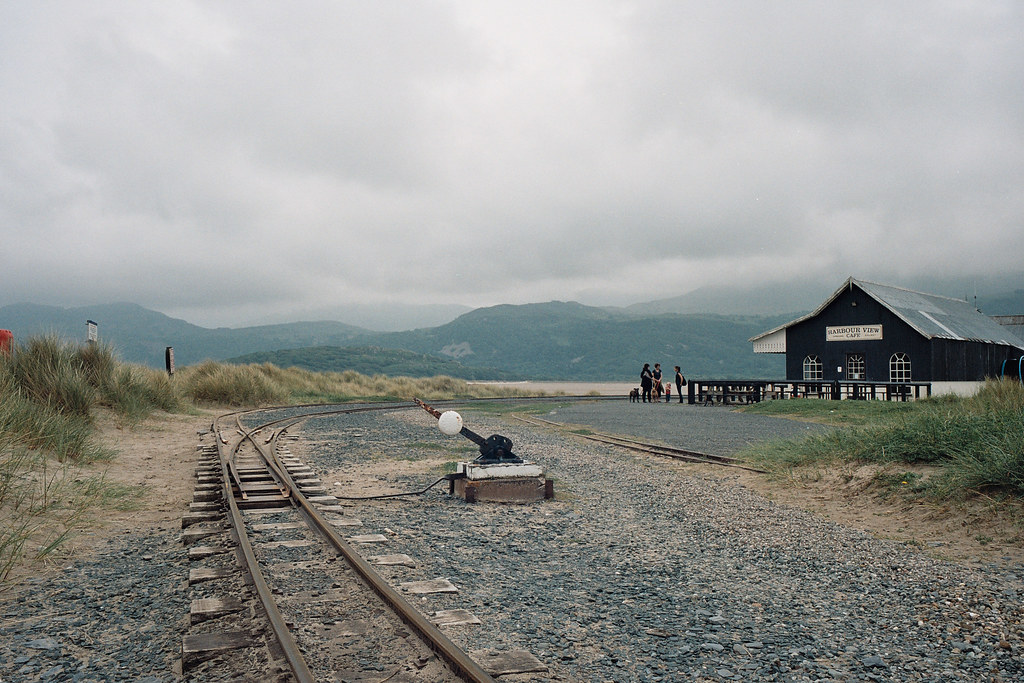
Of course not all rangefinder users shoot wide, in fact, more often than not I shoot 50mm with mine. And this is where the Voigtlander R3A viewfinder comes into its own. The 1:1 finder allows shooting with both eyes open. This might sound like an odd thing to do, but the joy of it has to be witnessed to be appreciated! By combining the view of the right eye through finder with the view of the world through the left, the brain plays a little trick on you and the camera appears to project the frame lines on to a view of the world that extends entirely beyond that which is visible through the finder. It’s almost as if frame lines have been added to one’s vision rather than something that are part of a camera.
Whilst this is quite a pleasurable experience I don’t find either Voigtlander R2A or R3A to have quite as good a viewfinder in either my Leica M4-P or M7. The biggest difference being the brightness. The frame lines in all these cameras are bright and distinct, but the finders themselves in the Leica cameras have the overall advantage when it comes to brightness, especially the M7. And this is not the only advantage the Leica cameras have over the Voigtlanders…
The Rangefinder
The first criticism of the R2A and R3A rangefinder for me is that they aren’t quite as distinct as I would like in lower light. Sometimes, despite being able to see the RF patch, for some reason I don’t find it as easy to focus with. I’m not sure if it lacks contrast, or maybe flares out a bit or it might be the short EBL (more on that in a mo) but for whatever reason, it’s not quite as good as that of the M7 to my eye. I should add though, I don’t find this a consistent issue, just one that seems to rear its head more than I would like.
Rangefinder base length
Whilst I rarely like to look too closely at a cameras specifications, one of these cameras most notable shortcomings is its rangefinder “base length”. Base length – in simple terms – is the space between the camera’s rangefinder and the viewfinder. The longer the base length the more accurate the rangefinder is. To make things slightly more complicated the rangefinder’s base length needs to be multiplied by the magnification of the viewfinder to give something called the “Effective Base Length” – commonly abbreviated to “EBL”. You can read more about rangefinder effective base length in my quick guide.
The Voigtlander R2A has an EBL of 25.16mm and the R3A an EBL of 37mm.
This means that neither Voigtlander R2A or R3A have as precise a rangefinder as most other M-mount rangefinder cameras. And this is despite the R3A having the advantage of a 1:1 rangefinder. In fact having done a bit of research, the only Leica mount camera I can find that has a shorter EBL than the Voigtlanders is the Leica CL with an EBL of 18.1mm. Simply put, for longer lenses, and lenses with larger apertures the Voigtlanders have a notable disadvantage over the alternatives out there.
As I say in my quick guide to a rangefinder’s effective base length I’m not sure this is quite the disadvantage some would have you believe. There is no arguing with the fact that a shorter EBL is a disadvantage when shooting longer or faster lenses – the RF patch just doesn’t seem to pop as obviously when focus is found when compared directly to the M7 for example. But there is much more to the story than just effective base length when it comes to how easy a rangefinder is to focus. The ability to focus and shoot long or fast lenses accurately with a rangefinder comes down to a combination of variable alongside its EBL. Some of these variables might also affect or be a concern to some people more or less than to others.
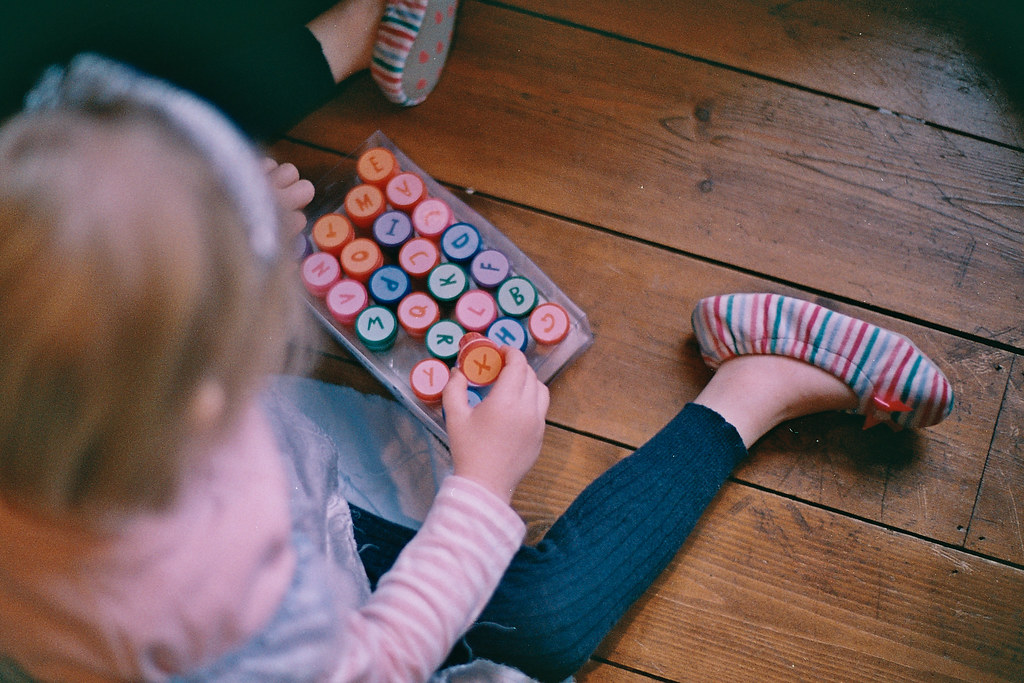
For my personal tastes I find focusing long/fast lenses easier with the Voigtlander R3A than I do with some of the more elderly cameras in my collection, for e.g. my Leica iiia. For me, a bigger, brighter more distinct viewfinder and passably good, solid edged rangefinder patch trumps the extra magnification in the rangefinder of my iiia. The fuzzy-ish rangefinder of my iiia works less well for me, as does having to focus with a small rangefinder then frame with a separate independent viewfinder; the sheer act of moving the camera from rangefinder to viewfinder for me feels a distraction from the process when such precision is required. I know for a fact that others would dispute this and claim the exact opposite reality for them, but this is really my point, what works for one person might or might not work for the next.
I suppose, in summary, if looking for the perfect camera for telephoto/fast lens shooting, the Voigtlanders are more than probably not the perfect choice. For my tastes, I prefer to use the M7. And maybe the M3 with its EBL of 62.33mm would be an even better – or possibly the best – choice (I’ll find out soon, I’ve just bought one). But for a more general shooter, other factors may sway the Voigtlander R2A or R3A into favour…
The shared features of the R3A & R2A
From this point on, all the other features of the R2A are the same as that of the R3A, and in fact I suppose the R4A, though I’ve not tried one of them. All my comments are based on my current experiences with my R3A combined with memories of the R2A I once owned.
The light meter and metering
As I have described (at near unnecessary length) in my M7 post, I do much prefer the light meter in the M7, to pretty much anything else, the Voigtlander R2A & R3A included. The Voigtlander has what to me now seems a fairly alien light meter, though at one point I was entirely used to it. I used to treat it as if it was some sort of multi segment meter; I assumed that it was taking an average of the whole frame. It wasn’t, but I was lucky enough that – thanks to the shape of its metering pattern – this assumption wasn’t a particularly damaging one to make. The lightmeter in the Voigtlander R2A & R3A is supposed to be a centre weighted meter like the M7, but in practice it doesn’t seem to work like that, or at least mine don’t. The metering pattern in mine seem to be a lot more heavily weighted to the lower left hand corner. I’m not 100% sure why, but comparing it to the M7 which has a white spot on the shutter curtain to read off, the Voigtlander seems to work by taking a reading off the whole of the light grey shutter. I guess that this just means that a certain area of the shutter has more of an effect on the meter, simply perhaps due to the position of the meter inside the camera. One way or another, the lower left corner of the frame is more sensitive to the light than anywhere else. It is also worth pointing out, that this effect is slightly less severe in the R3A over the R2A, though both behave like this to some extent. Of course knowing this information does lend some advantages. For example, for landscape photography it is pretty easy to snap. Since the camera naturally exposes for the shade rather than the sky, exposures should be pretty good with little effort. If you want to shoot portrait format when shooting a landscape, right hand side of the camera up will likely reap better results than shooting with the right hand side of the camera down. But even knowing these things, I don’t find metering as reassuring as I do with the M7. Though I should add, I perhaps slightly prefer having the exposure lock button as a separate button on the back of the camera as on the Voigtlander, but if you asked me again tomorrow I might have changed my mind on that one.
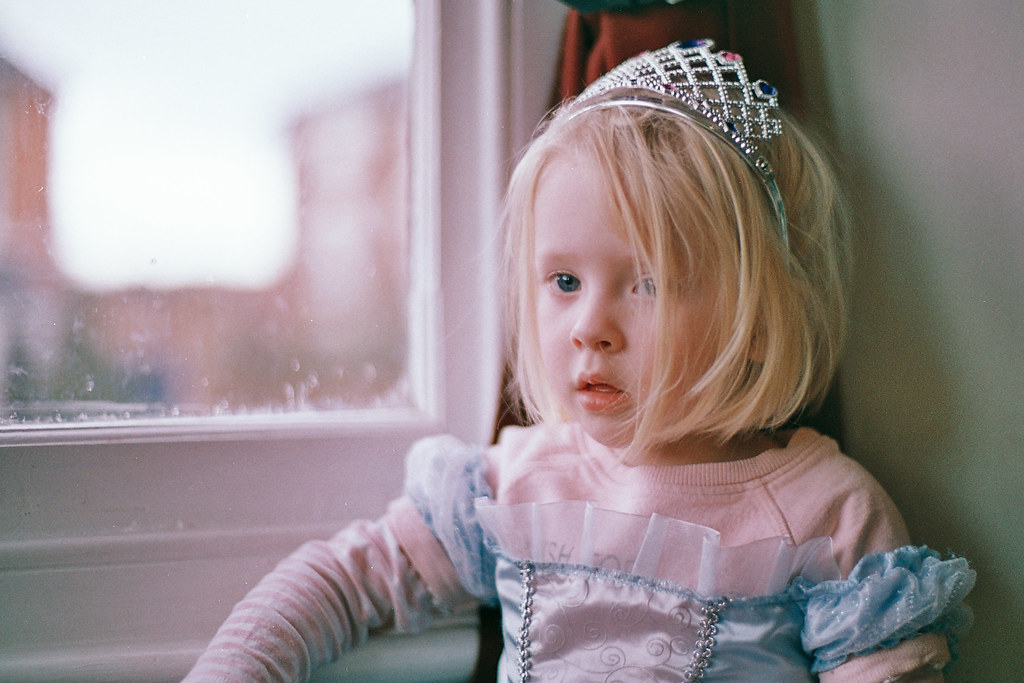
Light meter readout
When the camera is set to aperture priority – just like the Leica M7 – the selected shutter speed is projected into the viewfinder. But unlike the Leica M7, when the shutter speed is selected manually, the speed selected is shown as well as the required shutter speed. The required shutter speed blinks, and the currently selected shutter speed doesn’t. If the correct shutter speed is selected, it just stays illuminated – it’s basically a digital matched-needle meter. This obviously carries the advantage of showing just how far the shot is outside of the correct exposure, but it could also be argued that the red blinking lights inside the Viewfinder are a little distracting. For my tastes, it’s a system that works very well.
Metering range.
The metering range of the Voigtlanders only goes down to 1ev (100iso) vs. the -2ev (100iso) of the Leica M7. I so infrequently shoot in that sort of light, I can’t really see this as an issue, but for anyone who likes taking photos in moonlight, the M7 is probably a better choice.
The Voigtlander R2A & R3A controls, handling and feel
One of the biggest issues with the Voigtlander is not in fact an issue with itself in isolation, but more an issue with it when it is compared to its peers. What I’m taking about is its build quality. To my mind, the build quality of these cameras is perfectly adequate, but put it up against a Leica and all of a sudden it feels rather flimsy. The thing is though, this less solid feeling build quality lends itself to some nice little feature, that in my opinion offer a level of usability my Leica’s don’t.
Take for example the shutter speed dial. The Voigtlanders don’t have solid lump of metal that adorns the top of the average Leica, but instead they have a dial that manages to be so much more than just a shutter speed dial. Contained within the function of this single control wheel is the -/+2 stop exposure composition and ISO selection. It doesn’t have the quality feel of the shutter speed dial on my M7, but when compared to the crappy plastic ISO/exposure compensation dial on the back of an M7, all of a sudden, it looks like a fairly well designed bit of kit. Of course, for my personal tastes I prefer a lump of metal. And since I don’t use exposure compensation on the M7 at all anyway, for me it’s slightly moot. But whilst it’s not for me, I get the design philosophy behind it… which is not something I can say for everything on the M7 – the inclusion of a DX code reader being case in point
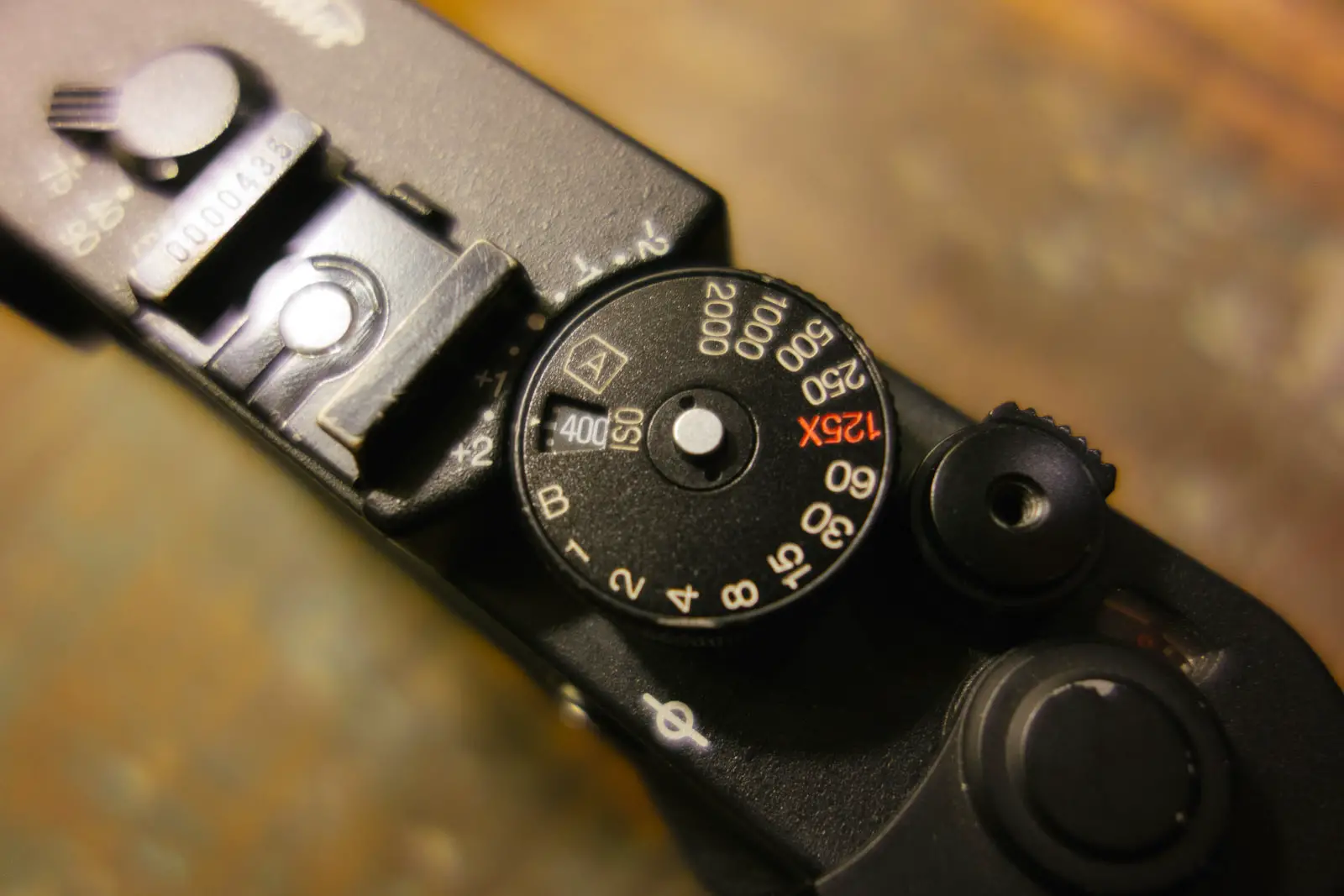
The comparatively flimsy feeling – though actually still metal – swing door on the back of the Voigtlander R2A & R3A also allow a little window to see what film is contained within. Ok this might not give the same confidence or tactile pleasure as unclipping a slab of metal, then fiddling a film into the bottom of Leica. But it’s practical. Of course swing doors are more prone to light leak, especially since there is use of foam to aid the light sealing, that will no doubt eventually degrade.
In the hand the Voigtlander also has some attributes that could be seen as advantages over a Leica. The rubber grips are easy to hold, and moulded on the back to support a thumb. It’s also lighter weight, and though a little taller it is largely speaking about the same size as a Leica M film camera (excluding of course the M5, which I suspect is bigger. It does definitely feel cheaper and less solid than my Leica cameras though.
Which leads me nicely on to longevity…
I’m not convinced that a Voigtlander could out-live any Leica M, even the electronically powered M7. Ultimately, there is a lot of plastic parts that make up a Voigtlander, and plastic is more prone to breakage than metal. My personal experience of the Voigtlander R2A leads me to believe they are less solid too. Though I’ve never had any serious issues, the rewind crank did come off once – I just screwed it back on. The rubber grip material on the R3A doesn’t fit very well either any more.
Shutter – Metal vs. Cloth
There is no doubting at all that a horizontal cloth shutter in a Leica film camera is more quiet sounding than the vertical metal shutter in a Voigtlander. So, advantage Leica then? Well not quite, since the Voigtlander offers 1/2000th over he 1/1000th of the Leica the Voigtlander also has an advantage. Which is better will be down to the individual and their needs. For me the quietness of the Leica wins, but like the exposure lock button, ask me on a different day, maybe one where I have some fast film loaded, and I might tell a different tale.
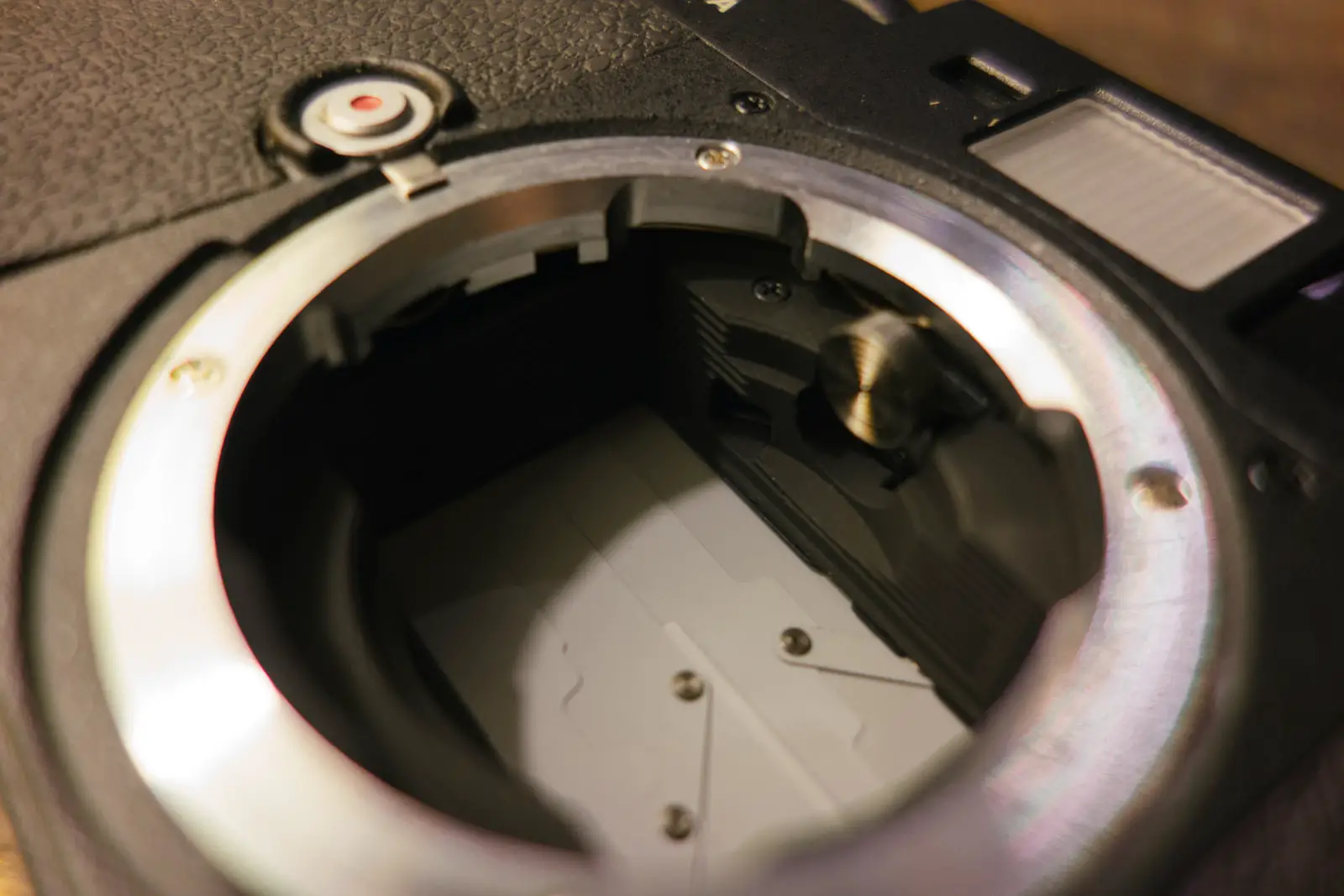
So to conclude my thoughts on the Voigtlander R2A & R3A
I suspect it’s fairly clear that I rate these two Voigtlander cameras. The Voigtlander R2A will forever remain a camera that I have a fondness for. It was my first M-mount rangefinder, not to mention the fact that it was a camera I chose to keep over a Leica M6 – though I must admit, I probably wouldn’t make that choice now. It was, for me, absolutely ideal as an entry into rangefinder photography, very easy to handle, very easy to understand and has a forgiving light meter. But to call it a rangefinder for beginners is to belittle it to my mind. The quick loading of the film and ability to see said film once loaded, the highly intuitive combined function shutter speed dial, the ergonomics, light weight and the big bright viewfinder are notable points of merit of both R2A and R3A. And that’s even when held up against the Leica M7, a camera that retails for 5-6x what the Voigtlander did!
The Voigtlander R3A also features a 1x magnification viewfinder, a feature that is completely unique amongst its m-mount peers. And as I said earlier, the experience of shooting with two eyes open is one that really has to be experienced to be appreciated!
Of course all is not a bed of roses with these cameras. For me the light meter – whilst forgiving – doesn’t quite give the confidence the M7 meter does. It’s still fairly easy to work with once the metering pattern is grasped, it just doesn’t feel as intuitive to use for me. Then there is the build quality, which in isolation is fine, but compare it to the Leica and it feels flimsy… But then compare most things to a Leica and they will feel flimsy… Perhaps I have spoiled myself with the Leicas now?
The biggest caveat with both Voigtlander R2A & R3A is the rangefinders effective base length. I shot with my R2A for years without any issue, but then I only ever shot with wide lenses, a 35mm f/1.4, a 50mm f/2 and a 75mm 2.5. I’m not sure I would be so confident shooting with the 50mm 1.1 on the R2A. It is fair to say that I can focus with the Voigtlander R3A and 50mm f/1.1, but given the choice I would rather use the M7 or M4-P as I find myself able to focus with those combinations quicker.
I think ultimately, whilst they might not be perfect for every type of rangefinder shooting, both Voigtlander R2A and R3A offer a very compelling option for anyone on a more limited budget. The R2A makes a great all rounder with some great features, with the R3A making a better option where the preference is for longer lenses… and there is no disputing that shooting with both eyes open is a fantastic experience!
Cheers for reading!
Hamish
Links and references:
More Voigtlander R3A photos on my flickr
More Voigtlander R2A photos on my flickr
A review I wrote in 2011 about the Voigtlander R2A on RPF
Voigtlander Bessa R2A or R3A 35mm Leica M Mount Rangefinders – CameraQuest
Info on effective base length – CameraQuest
An interesting comparison between Voigtlander R4A and Leica M6
Share this post:
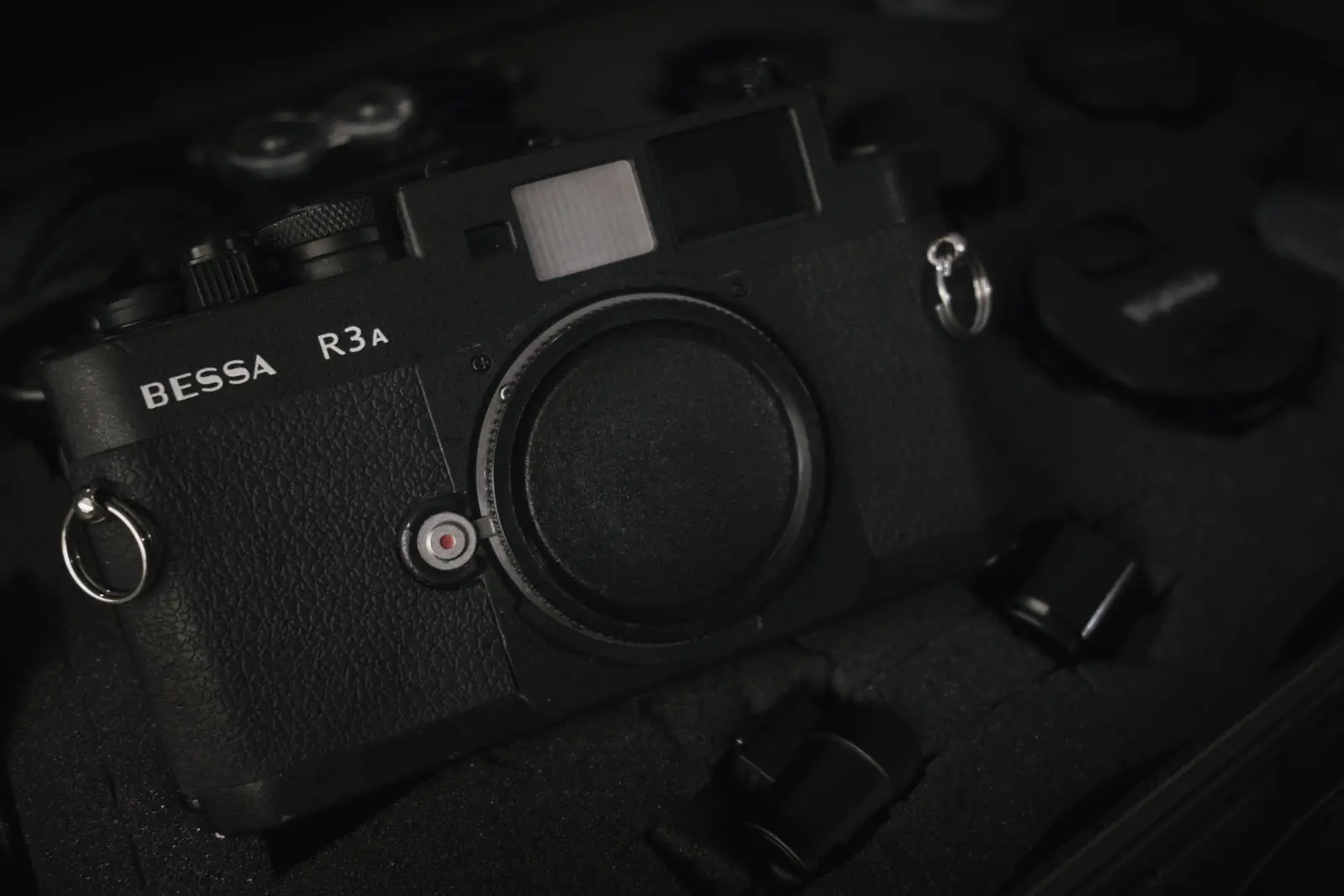








Comments
Harman on Voigtlander R2A & R3A Review
Comment posted: 29/12/2014
Comment posted: 29/12/2014
Comment posted: 29/12/2014
Comment posted: 29/12/2014
Roll #6: Wannabes and Slide Film | 52 rolls on Voigtlander R2A & R3A Review
Comment posted: 18/02/2015
r_kt on Voigtlander R2A & R3A Review
Comment posted: 28/02/2015
Comment posted: 28/02/2015
Rom on Voigtlander R2A & R3A Review
Comment posted: 13/06/2017
I'm a big fan of this site though, don't get me wrong. It's just that I'm never going to be able to afford to buy a Leica in good moral and financial conscience, so it makes no sense to me as a standard.
Comment posted: 13/06/2017
Adrian on Voigtlander R2A & R3A Review
Comment posted: 26/07/2017
Comment posted: 26/07/2017
Tom Freda on Voigtlander R2A & R3A Review
Comment posted: 02/06/2019
There's one problem though; out of curiosity, I recently bought a cheap M mount 7Artisans 35mm f2 on Amazon and am unexpectedly blown away by the IQ. Originally, I intended to try it out and then return it, but now I want to keep it. The problem is; after testing, the focal length more accurately is a 38mm, not 35mm. I'm not bothered by that, but I'm wondering, between the R3A or the R2A, which one's framelines would go better with this lens?
And, I'm assuming the 35mm or 40mm framelines would automatically come up? Leica recognized the lens as a 35mm on M2s.
Thanks for your advice.
Comment posted: 02/06/2019
Comment posted: 02/06/2019
Comment posted: 02/06/2019
Robert C on Voigtlander R2A & R3A Review
Comment posted: 20/06/2020
Comment posted: 20/06/2020
Ken Rowin on Voigtlander R2A & R3A Review
Comment posted: 28/09/2021